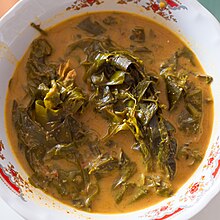Derivation of specific name
provided by Flora of Zimbabwe
siamea: of Siam (Thailand)
- license
- cc-by-nc
- copyright
- Mark Hyde, Bart Wursten and Petra Ballings
- bibliographic citation
- Hyde, M.A., Wursten, B.T. and Ballings, P. (2002-2014). Senna siamea (Lam.) H.S. Irwin & Barneby Flora of Zimbabwe website. Accessed 28 August 2014 at http://www.zimbabweflora.co.zw/speciesdata/species.php?species_id=127140
- author
- Mark Hyde
- author
- Bart Wursten
- author
- Petra Ballings
Description
provided by Flora of Zimbabwe
Tree.
- license
- cc-by-nc
- copyright
- Mark Hyde, Bart Wursten and Petra Ballings
- bibliographic citation
- Hyde, M.A., Wursten, B.T. and Ballings, P. (2002-2014). Senna siamea (Lam.) H.S. Irwin & Barneby Flora of Zimbabwe website. Accessed 28 August 2014 at http://www.zimbabweflora.co.zw/speciesdata/species.php?species_id=127140
- author
- Mark Hyde
- author
- Bart Wursten
- author
- Petra Ballings
Frequency
provided by Flora of Zimbabwe
Local
- license
- cc-by-nc
- copyright
- Mark Hyde, Bart Wursten and Petra Ballings
- bibliographic citation
- Hyde, M.A., Wursten, B.T. and Ballings, P. (2002-2014). Senna siamea (Lam.) H.S. Irwin & Barneby Flora of Zimbabwe website. Accessed 28 August 2014 at http://www.zimbabweflora.co.zw/speciesdata/species.php?species_id=127140
- author
- Mark Hyde
- author
- Bart Wursten
- author
- Petra Ballings
Worldwide distribution
provided by Flora of Zimbabwe
Indonesia and the Malay Peninsula
- license
- cc-by-nc
- copyright
- Mark Hyde, Bart Wursten and Petra Ballings
- bibliographic citation
- Hyde, M.A., Wursten, B.T. and Ballings, P. (2002-2014). Senna siamea (Lam.) H.S. Irwin & Barneby Flora of Zimbabwe website. Accessed 28 August 2014 at http://www.zimbabweflora.co.zw/speciesdata/species.php?species_id=127140
- author
- Mark Hyde
- author
- Bart Wursten
- author
- Petra Ballings
Comprehensive Description
provided by North American Flora
Sciacassia siamea (Lam.) Britton
Cassia siamea Lara. Encyc. 1: 648. 1785. Cassia florida Vahl, Symb. 3: 57. 1794. Cassia gigantea Bert.; DC. Prodr. 2: 492. 1825. Cassia arborea Macfad. Fl. Jam. 1: 343. 1837.
A tree, 8-12 m. high, the young twigs and the inflorescence puberulent. Stipules very small, caducous; petioles short; leaflets 6-14 pairs, oblong to oblong-lanceolate, obtuse or emarginate, mucronate, 3-7 cm. long, 1-2 cm. wide, chartaceous, glabrous above, glabrous or minutely puberulent beneath, finely reticulate-veined; racemes corymbose-paniculate, several-manyflowered; bractlets 5-6 mm. long; pedicels about 3 cm. long, or shorter; sepals suborbicular, puberulent, 6-7 mm. long; petals clawed, bright yellow, 12-16 mm. long; legume linear, thickcoriaceous, 2-2.5 dm. long, 1-1 .5 cm. wide, puberulent or glabrate, tipped, its margins thickened.
Type locality: Siam.
Distribution: Widely planted for shade in the West Indies and tropical continental America, locally naturalized. Native of the East Indies.
- bibliographic citation
- Nathaniel Lord Britton and Joseph Nelson Rose. 1928. (ROSALES); MIMOSACEAE. North American flora. vol 23(1). New York Botanical Garden, New York, NY
Physical Description
provided by USDA PLANTS text
Perennial, Trees, Woody throughout, Stems woody below, or from woody crown or caudex, Stems erect or ascending, Stems or branches arching, spreading or decumbent, Stems greater than 2 m tall, Stems solid, Stems or young twigs sparsely to densely hairy, Leaves alternate, Leaves petiolate, Stipules inconspicuous, absent, or caducous, Stipules setiform, subulate or acicular, Stipules deciduous, Sti pules free, Leaves compound, Leaves even pinnate, Leaf or leaflet margins entire, Leaflets opposite, Leaflets 10-many, Leaves glabrous or nearly so, Leaves coriaceous, Inflorescences racemes, Inflorescence axillary, Inflorescence terminal, Bracts very small, absent or caducous, Flowers actinomorphic or somewhat irregular, Calyx 5-lobed, Calyx hairy, Petals separate, Petals orange or yellow, Fertile stamens 6-8, Stamens heteromorphic, graded in size, Stamens completely free, separate, Filaments glabrous, Anthers opening by basal or terminal pores or slits, Style terete, Fruit a legume, Fruit stipitate, Fruit unilocular, Fruit freely dehiscent, Fruit elongate, straight, Fruit oblong or ellipsoidal, Fruit rugose wrinkled or reticulate, Fruit coriaceous or becoming woody, Fruit exserted from calyx, Fruit compressed between seeds, Fruit hairy, Fruit 11-many seeded, Seed with elliptical line or depression, pleurogram, Seeds ovoid to rounded in outline, Seed surface smooth, Seeds o live, brown, or black.
Senna siamea: Brief Summary
provided by wikipedia EN
Senna siamea, also known as Siamese cassia, kassod tree, cassod tree and cassia tree, is a legume in the subfamily Caesalpinioideae. It is native to South and Southeast Asia, although its exact origin is unknown.
It is a medium-size, evergreen tree growing up to 18 m (60 ft) with yellow flowers. It is often used as shade tree in cocoa, coffee and tea plantations. In Thailand it is the provincial tree of Chaiyaphum Province and some places in the country are named after it.
Leaves are alternate, pinnately compound, with slender, green-reddish, tinged axis and 6 to 12 pairs of leaflets on short stalks, rounded at both ends.
- license
- cc-by-sa-3.0
- copyright
- Wikipedia authors and editors



